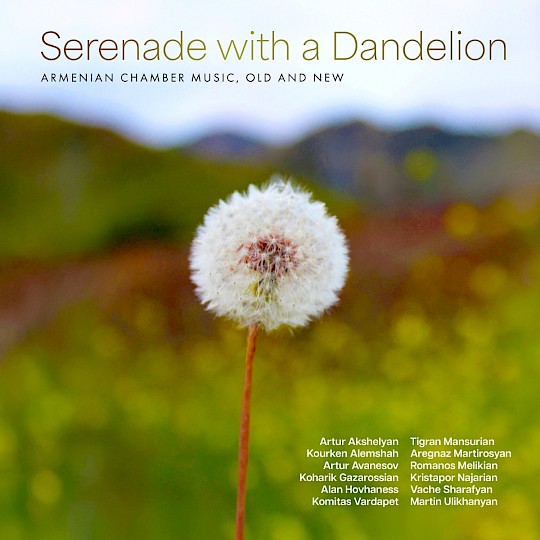By Huntley Dent
Many listeners, including reviewers, will be daunted by the prospect of four CDs devoted to Armenian chamber music of the 20th and 21st centuries, and the headnote [not reproduced here] is a bewildering thicket of names unknown outside Armenia. Good intentions count, and these performances are clearly a labor of love, the quality at times rising to an exceptional level of technique and musicality. But there needs to be an overriding reason for a general listener to explore this deluxe package, which I aim to provide. I’ve sporadically encountered a disc devoted to Armenian classical music — the last one was by the stunning violinist Sergey Khachatryan in 2015, a beautiful recital springing from a sad purpose, to commemorate the centennial of the tragic Armenian genocide committed by Turkey under the cloak of World War I.
The set under review serves a different aim, reaching out to the larger music world from a small country whose artists and musicians are fierce loyalists. The expatriate Armenian community in Los Angeles gave rise to a series of concerts featuring contemporary Armenian composers. The founder of the Dilijan Chamber Music Series was violinist Movses Pogossian, who had moved with his family to L.A. in 2004. For the next 15 seasons a rich array of composers and compositions emerged, including over 50 world premieres. Pogossian and his wife, Varty Manouelian, who is also a violinist, are superb musicians, as can be heard in the opening work on CD 1, a fascinating violin duo by Vache Sharafyan. As a way to dip your toe in the water, a stream or download of their scintillating performance will be a strong motivation for exploring further.
The Sharafyan pieces, titled Serenade with a Dandelion, is the collection’s title track; it was also on the first program of the Dilijan series. As you’d expect, the composers and performers gathered here are closely knit as friends, colleagues, and collaborators. That raises an issue for general listeners. What justifies these works beyond cultural ties to Armenia? There are strong elements of folk music at work, but in general the idioms being represented fall into the eclecticism that prevails internationally today. There is no worry about provincialism. One mystifying aspect, however, is the title Modulation Necklace that serves as the rubric for all four discs. It refers to “a string of different modal constructions” rooted in Armenian folk music. This collection is an extension of an initial release titled “Modulation Necklace” from 2020 on the New Focus label.
I’ve devoted considerable space to pricking the reader’s curiosity, but what counts, after all, is the music, which I will cover one CD at a time.
CD 1: We begin with five assorted chamber works, of which two are string quartets, one is part of a vocal cycle, and three are duos. I mentioned the remarkable quality of the first duo, Sharafyan’s Serenade with Dandelion. The two violins are in giddy constant motion on separate, sometimes intersecting courses, bright with trills and engaging thematic material. The idiom is contemporary but personal and captivating—it is hard to imagine a more inviting entry point for the collection. More challenging but equally arresting is Sharafyan’s String Quartet No. 2, built in linear fashion out of strongly contrasting sections. The mood ranges from serenely contemplative to agitated, and to hold the structure together there are nods to sonata form.









